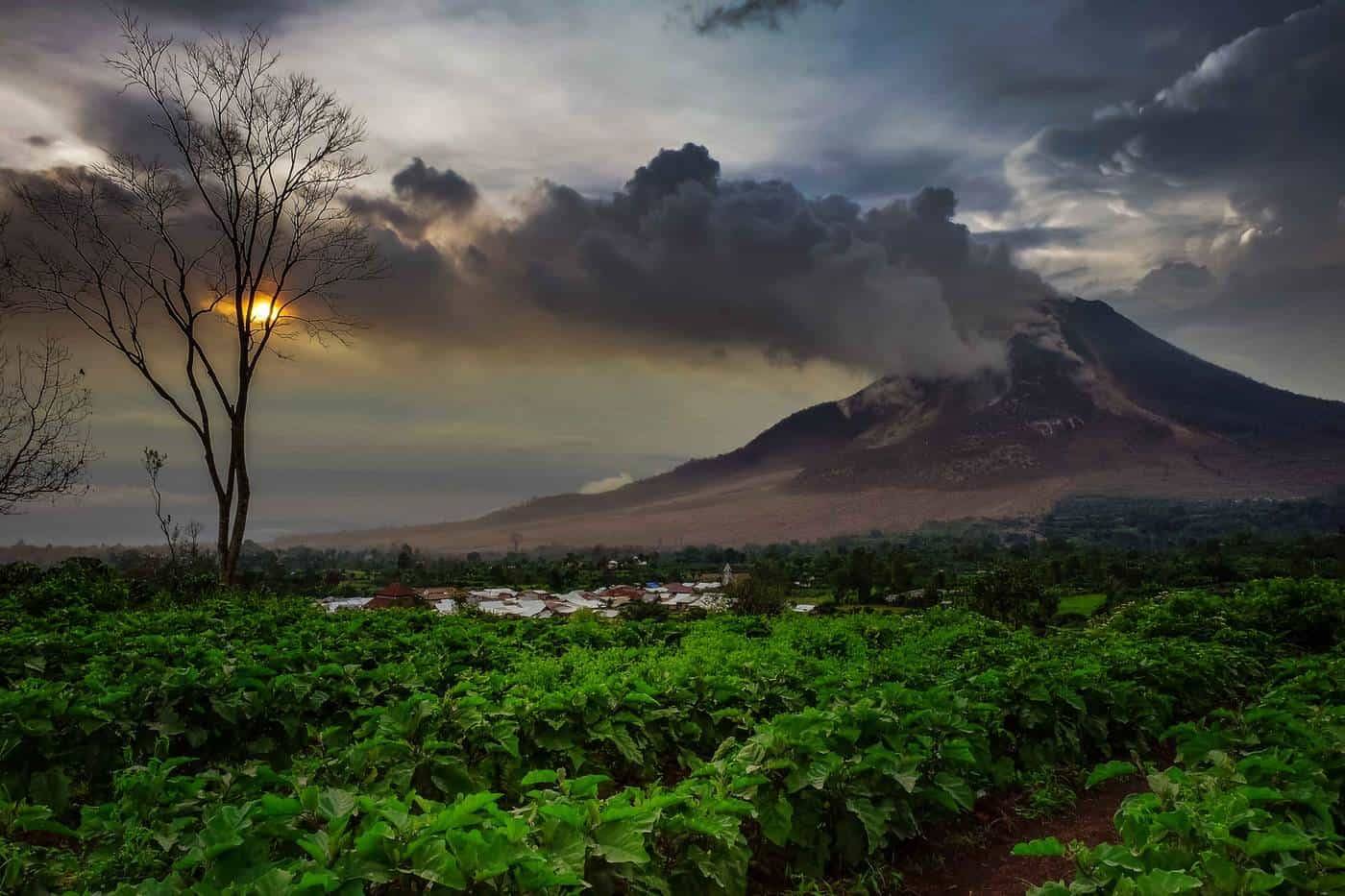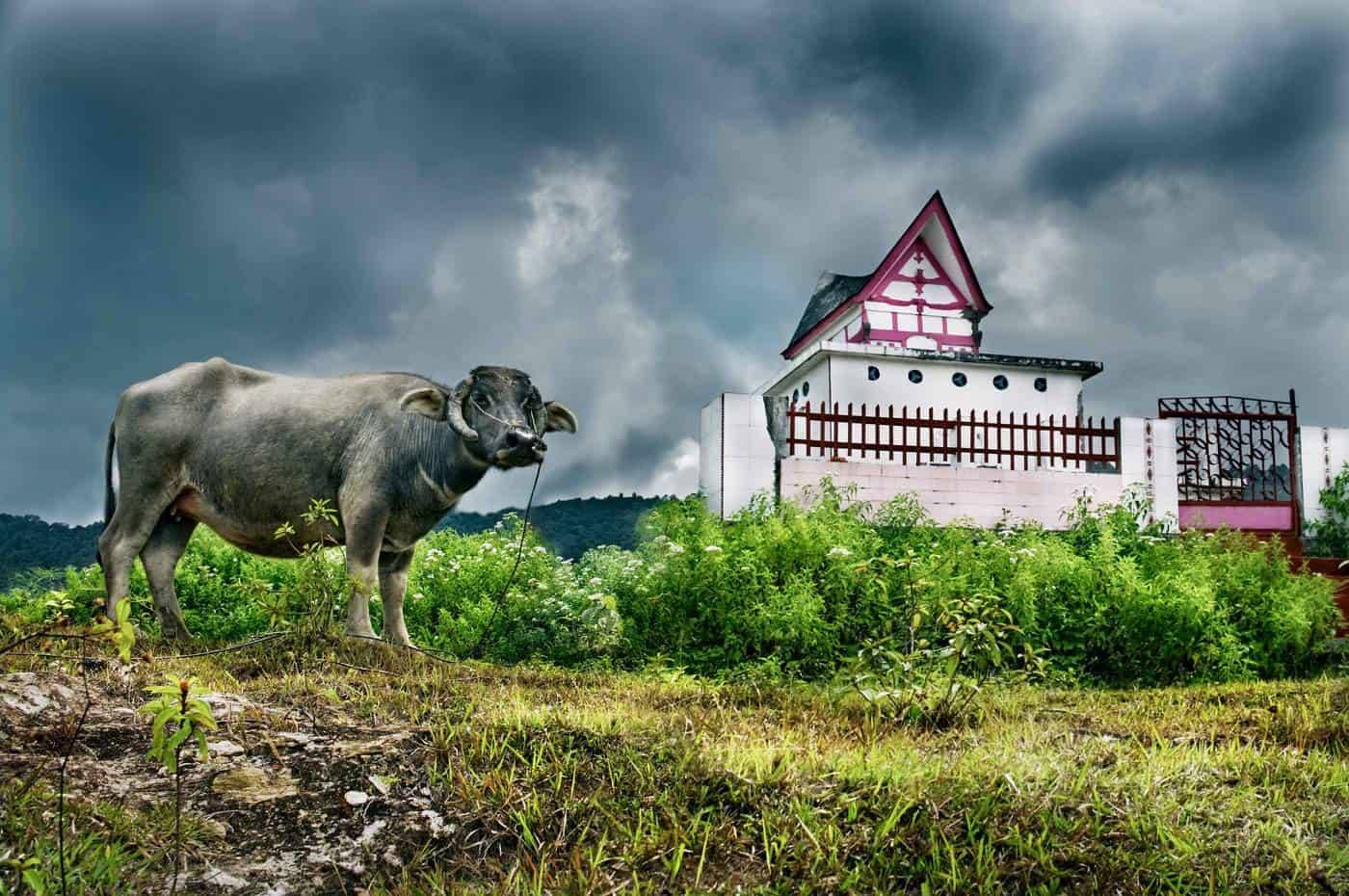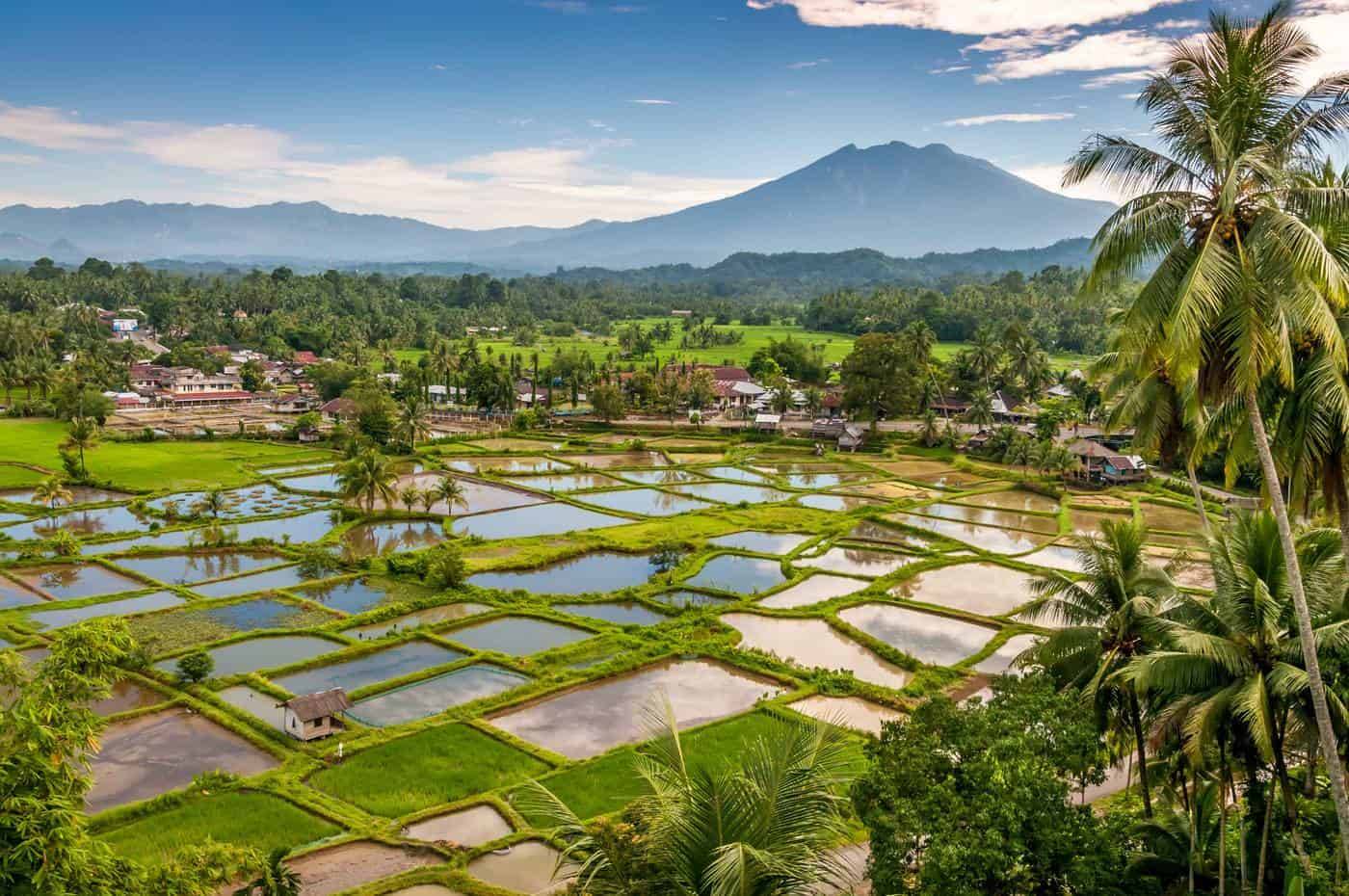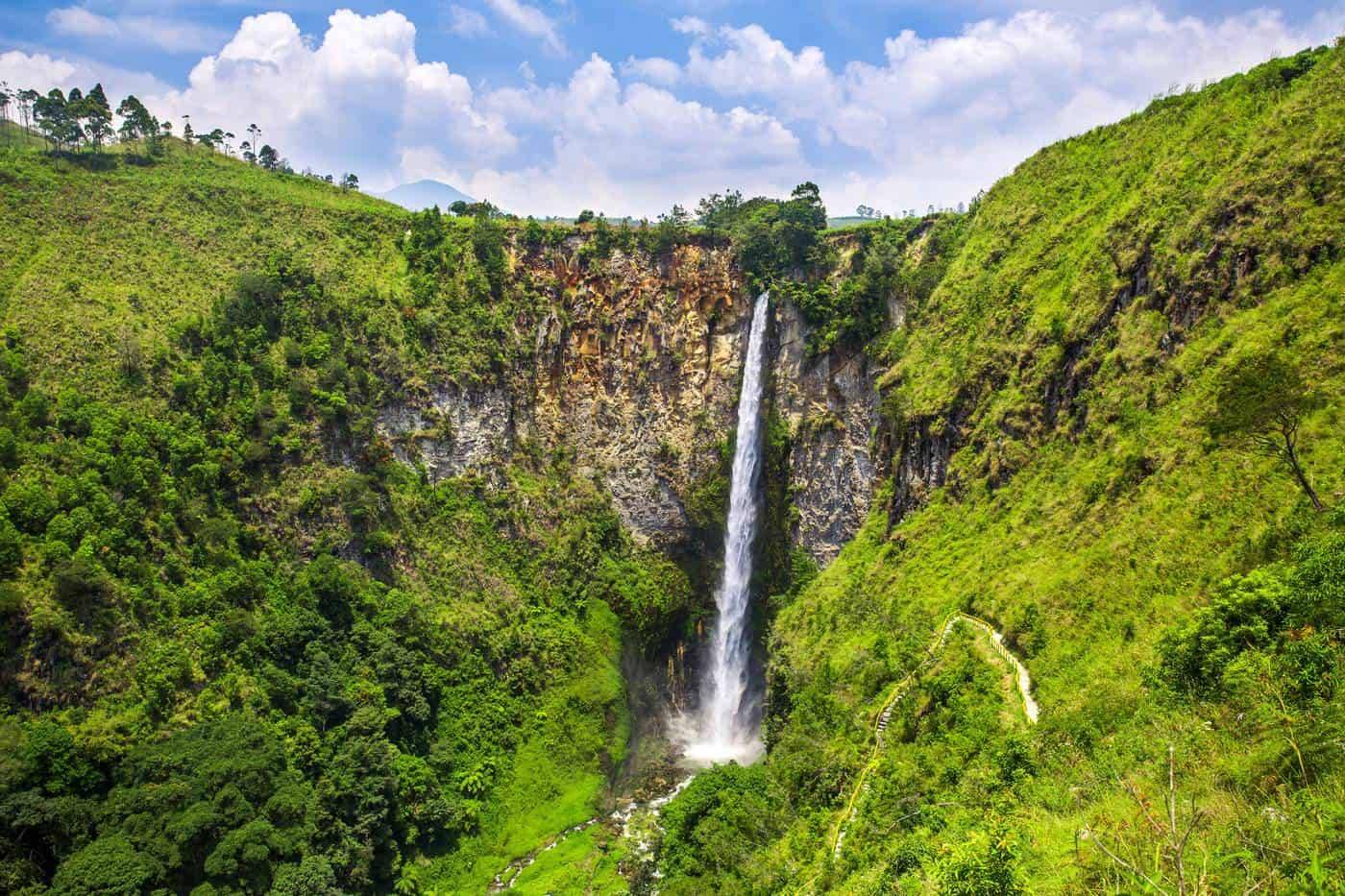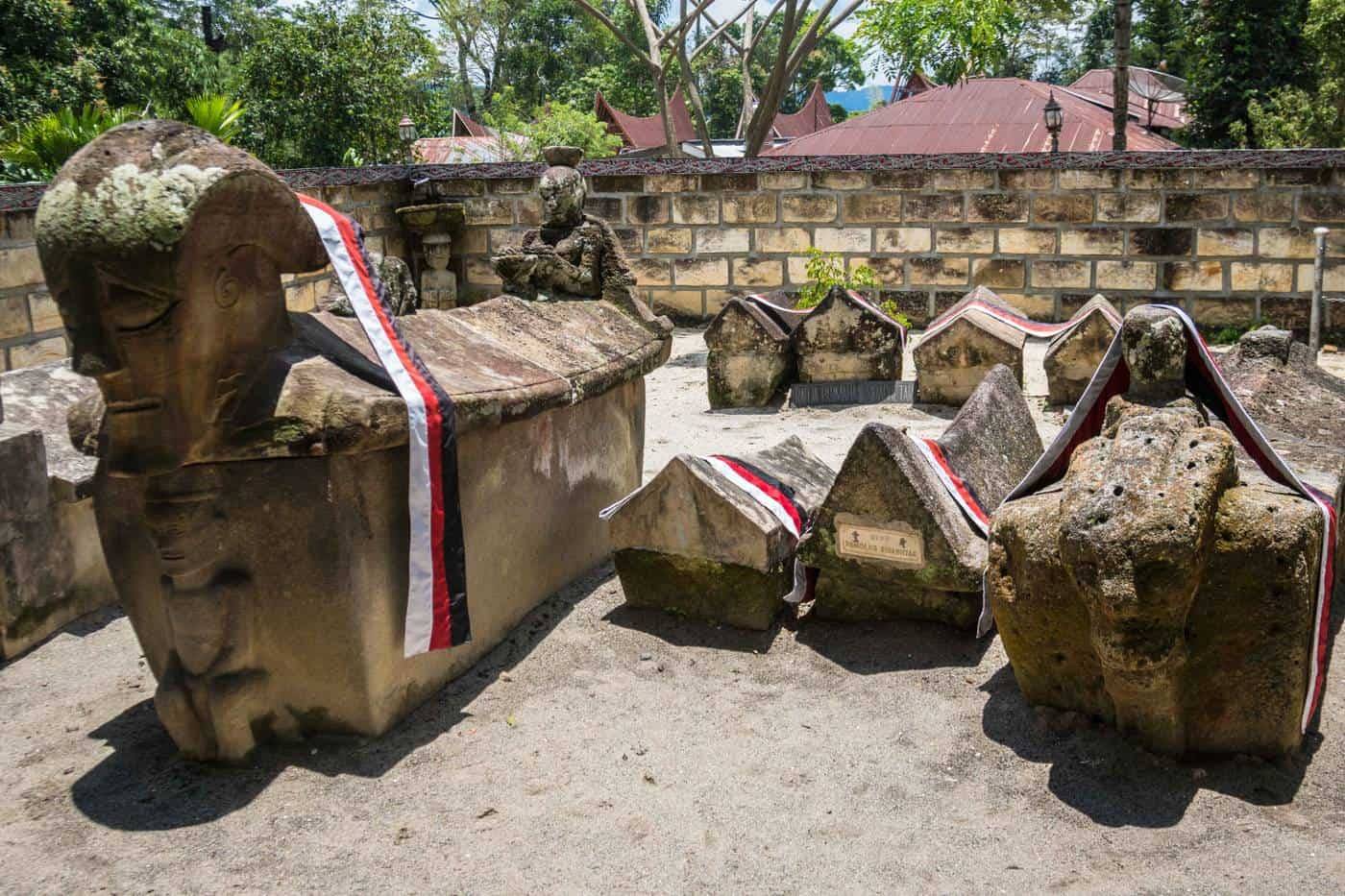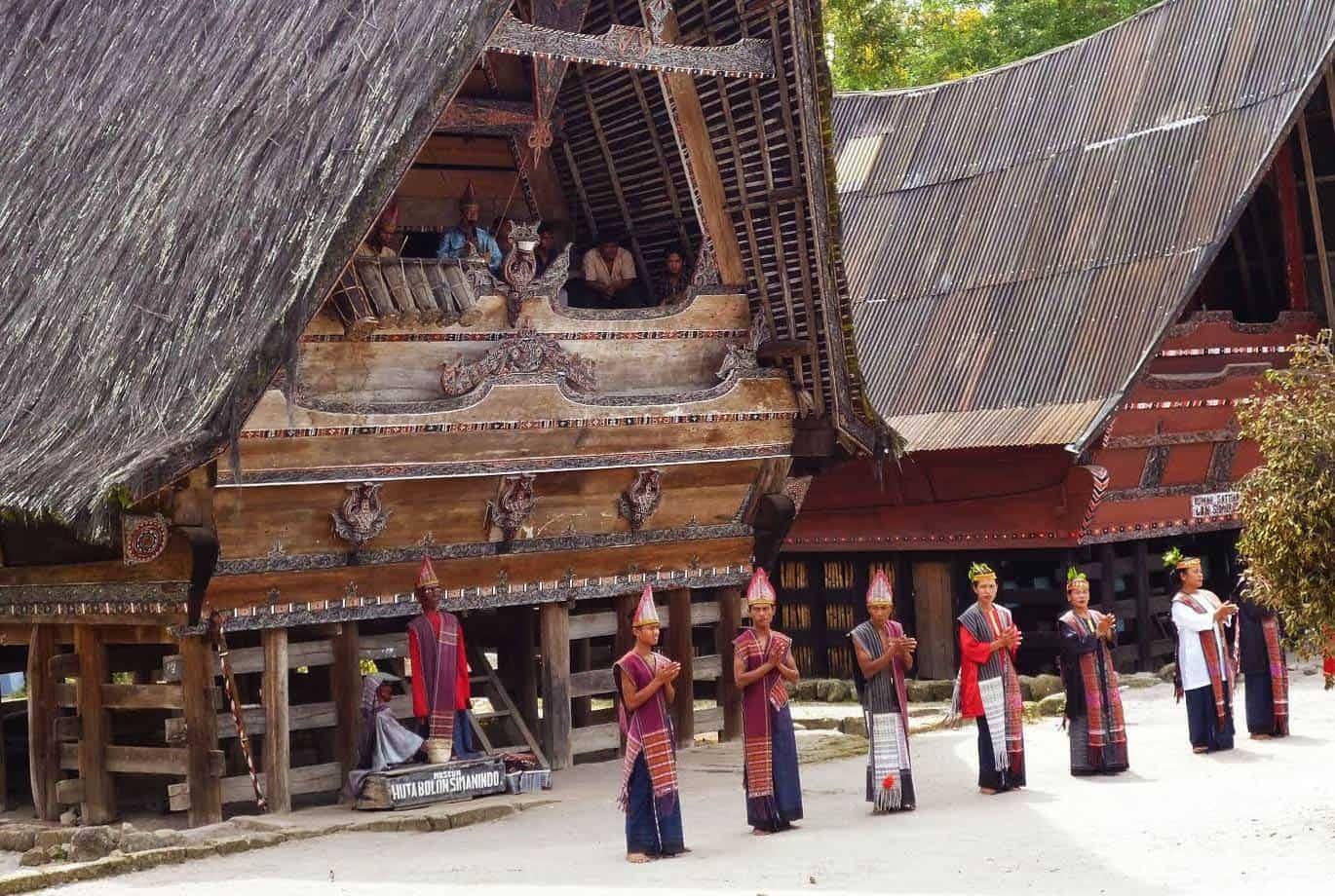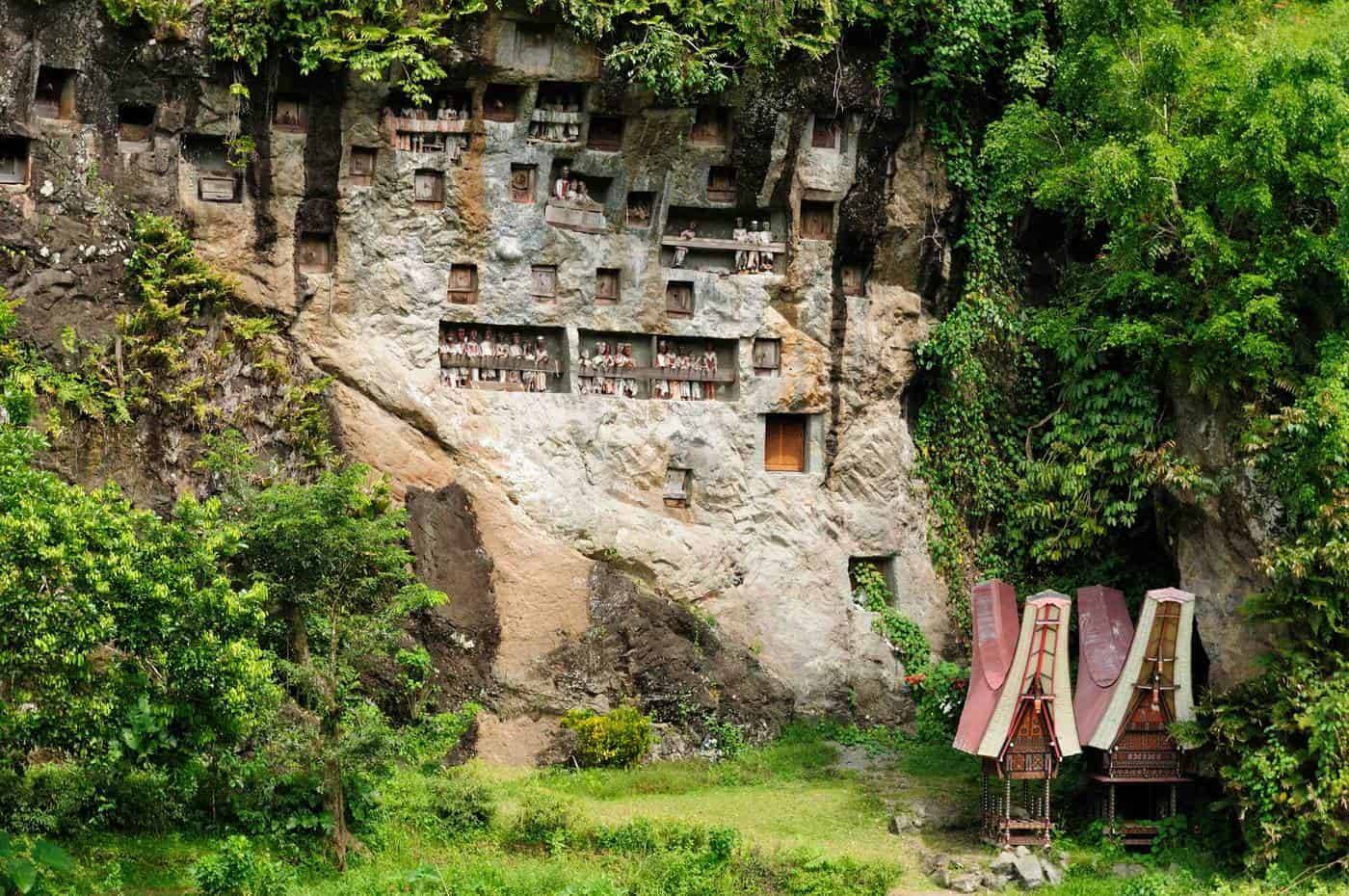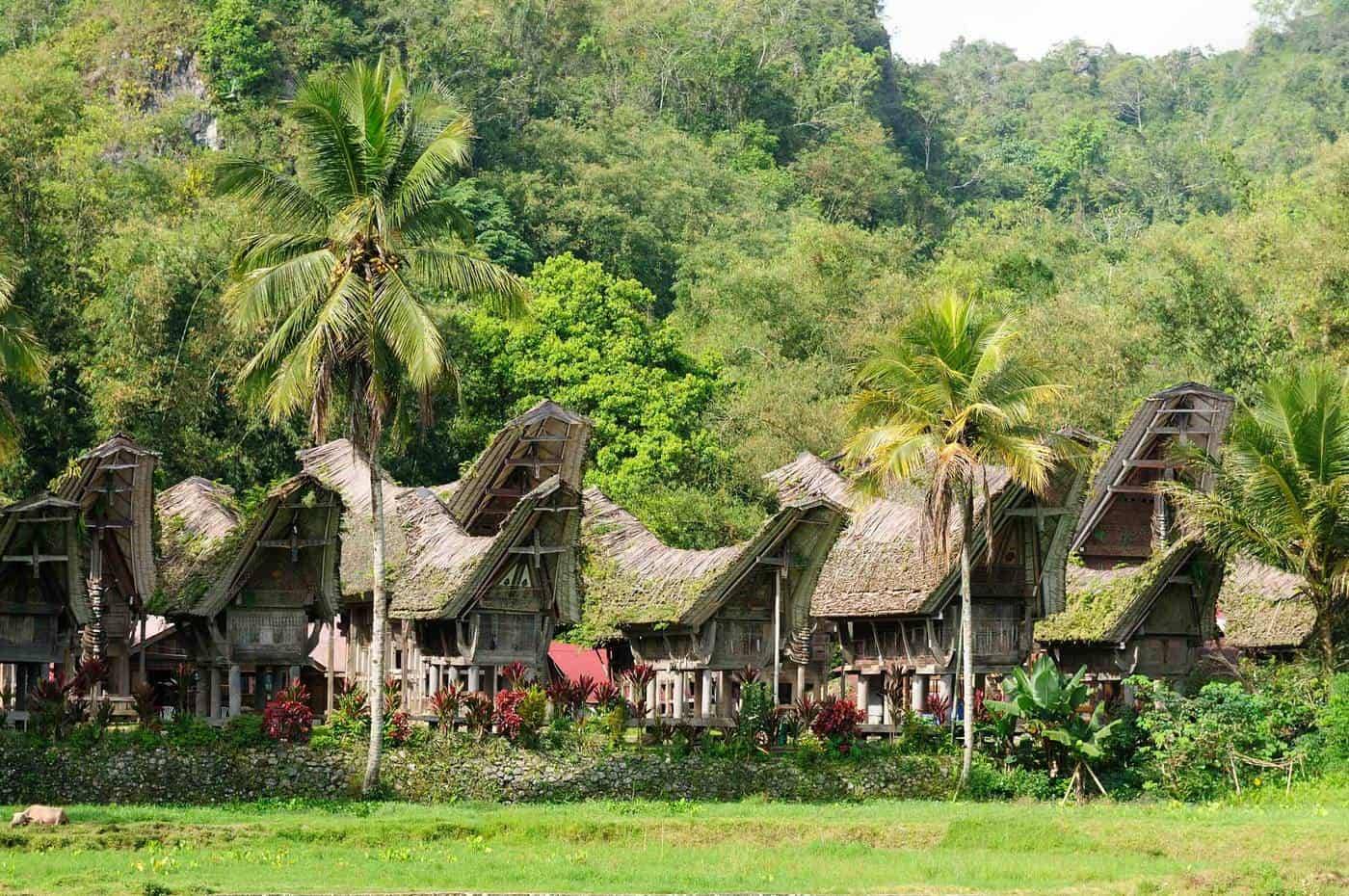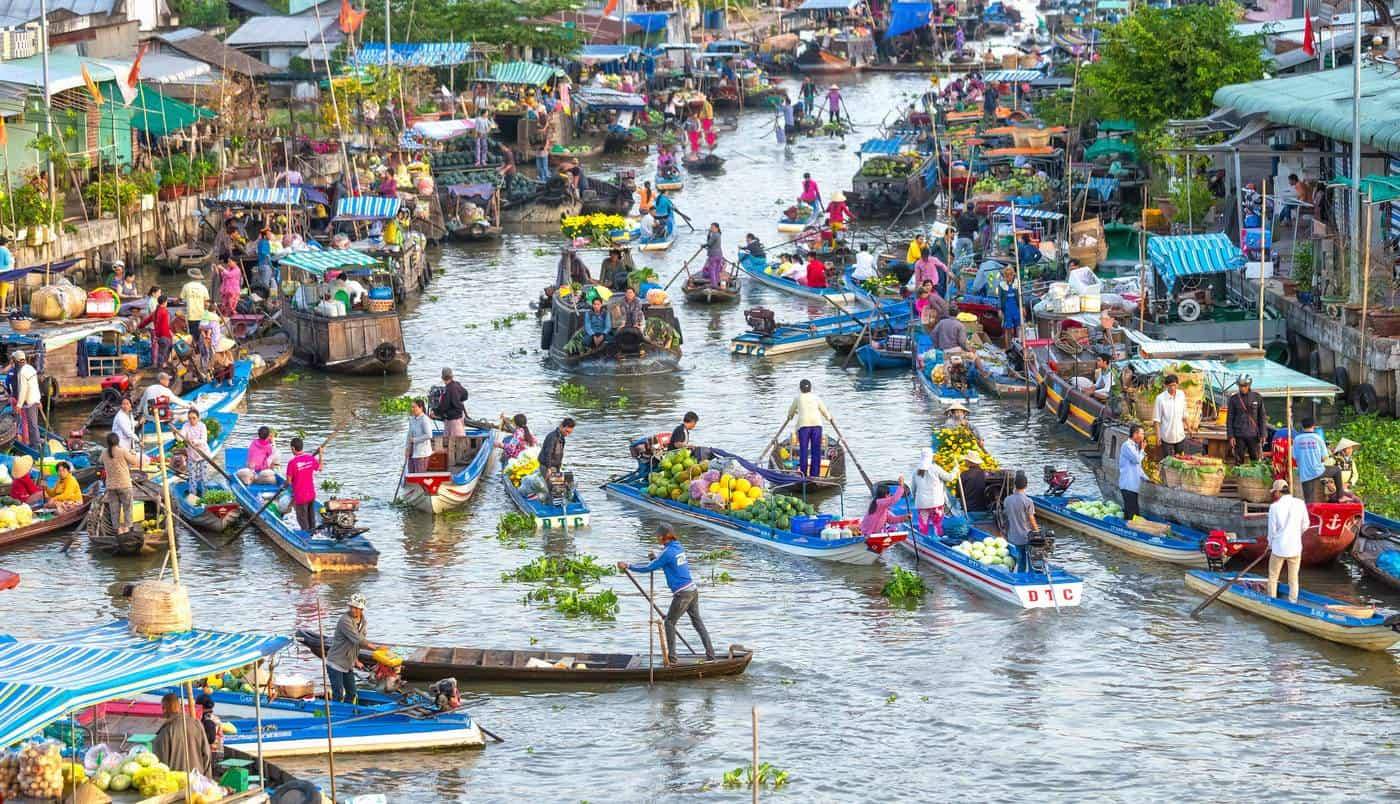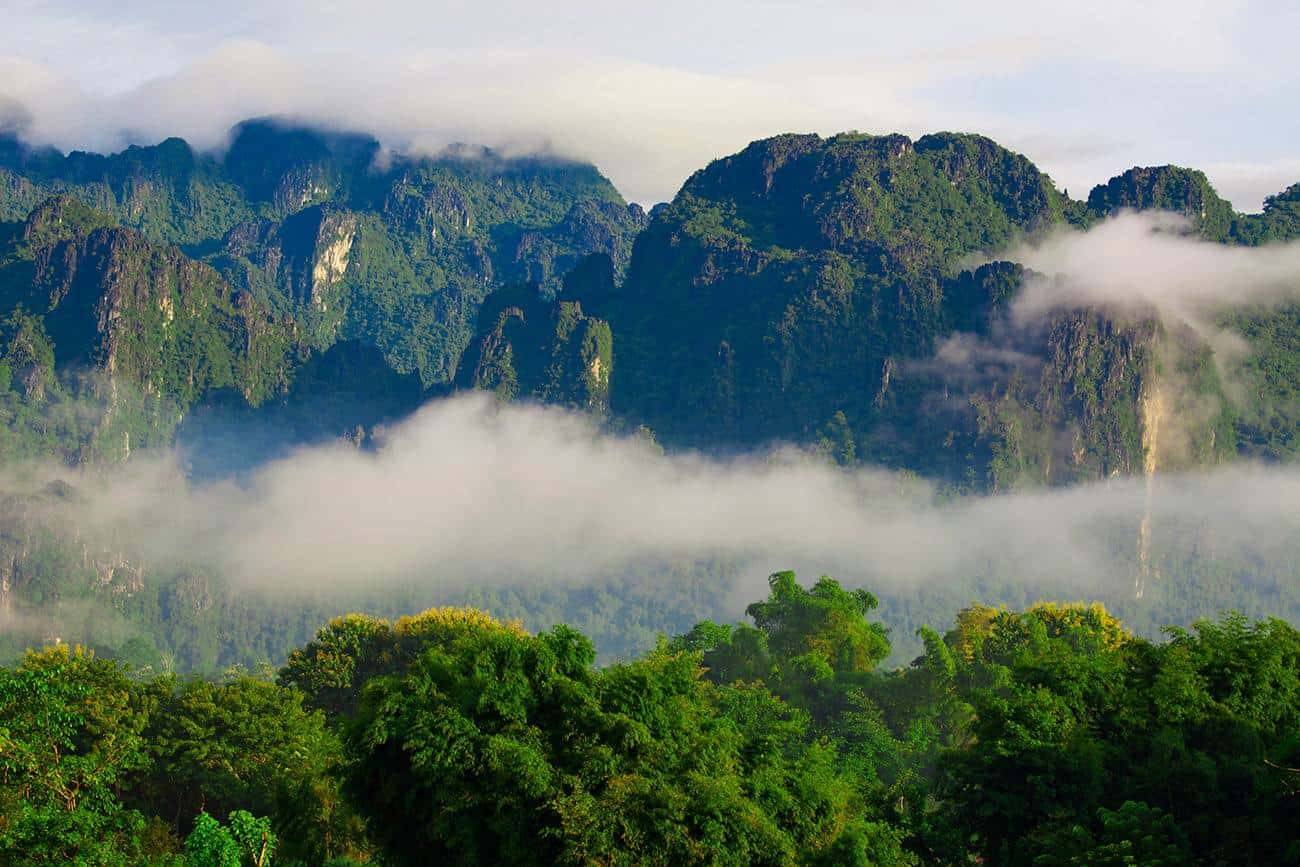
LAKE TOBA & SAMOSIR ISLAND (IN THE FOOTSTEPS OF THE BATAK)
KARO HIGHLANDS
Covering the area of 5000 sq km, from the border of Aceh all the way to Lake Toba, Karo Highlands is a vast and quite fertile volcanic plateau, at the heart of the Bukit Barisan mountain range.
The native Karo minority is a subgroup of the formerly headhunting Batak tribes, well-known for their animistic beliefs, ancient rituals and odd customs, amongst which the local funeral and reburial ceremonies are the rarities that attract most of the visitors.
During the colonial era, the Dutch taught the locals how to build pretty wooden houses with striking palm-frond gables, and the traditional Karo architecture slowly blended with the Dutch design. The outcome is one of the main reasons for tourists to pay a visit – the houses here truly are extraordinary.
In the last few decades, several traditional villages have opened to strangers, and for a small fee they can search around and take some pictures, e.g. Peceren, Gurusinga or Lingga Tulu. Eco-tourism is clearly in the limelight.
BERASTAGI
Berastagi is the gateway to Karo Highlands and Lake Toba, and it is a lovely hill-station with a pleasant atmosphere. The town lies at an altitude of 1220 m which provides fresh air and spectacular views.
The surrounding forests of Berastagi boost natural attraction; Sipiso-Piso & Sikulikap Falls are amongst the highlights. Climbing Gunung Sibayak (2,212 m) and Gunung Sinabunk (2,451 m) is well-recommended to the experienced mountaineers, whereas the Gundaling Hill (1575 m) can be reached by a vehicle or scooter.
There are numerous wonderful walking trails and hot springs in the area and well-developed eco-tourism infrastructure.
ESSENTIAL EXPERIENCES IN THE KARO HIGHLANDS
- Berastagi – fruit markets, hot springs, Gundaling farms, Bukit Kubu nature park, Mikie Funland
- Gundaling Hill – drive to the top of the hill for spectacular views to the Lake Toba (horse riding available)
- Climb Gunung Sibayak (2,212 m) or Gunung Sinabung (2,451 m) and have a dip in gorgeous hot springs on the way back (both volcanoes are a full day trip, 10-12 hrs return)
- Lumbini Natural Park – a beautiful Buddhist temple with Taman Alam Limbinis – a replica of the famous Shwedagon Pagoda in Myanmar
- Karo Villages – visit the ethnic Karo villages of Peceren, Gurusinga and Lingga Tulu and learn about their fascinating culture
- Sipiso-Piso Waterfall – hire a scooter and ride to the most photographed waterfall in Sumatra, stop by at the impressive Sikulikap Falls on the way back
LAKE TOBA & SAMOSIR ISLAND
Believed to be the world`s largest and deepest caldera, Lake Toba spans over 1.707 sq km and reaches the depth of 529 m. The lake was created by an enormous volcanic eruption more than 74, 000 years ago, it is a giant lake, sitting right at the heart of North Sumatra – in the Samosir Plateau.
Danau Toba is encircled by robust mountains and active volcanoes but also dense forests and swamps, and it is the premier tourist destination in Sumatra.
On the western shores of Lake Toba, a bridge links the legendary Samosir Island with the town of Pangururan – and this is where most of the travellers will want to go. The Island of Samosir, also called ‘Island of the Death’ is culturally and geologically an important part of Danau Toba.
It sits right in the middle of the lake, and it has been home to the Toba Bataks for centuries. The most popular attractions on the island are well-preserved villages and ancient sarcophagi only discovered in the 1930s.
ESSENTIAL EXPERIENCES IN LAKE TOBA & SAMOSIR ISLAND
- Tomok – discover the ancient sarcophagus of Raja Sidabutar and the sacred Hariara Tree
- Ambarita – search around the curious collection of megalithic stone chairs, one of which is mysteriously occupied by a stone statue
- Simanindo – cycle around the Samosir Islands and visit the tribal Batak villages and their characteristic Jabu houses
- Toba Batak dancing performances – witness a spectacular morning dance in Huta Bolon Simanindo Museum (starting every morning around 10.30 am)
- Trekking – most of the tracks start at Ambarita, Garoga and Partukongan villages, but most of the other villages have trekking options around. The 18 km Danau Sidihoni Trail is one of the favourites
- Tuk Tuk – swimming, canoeing and other water activities are recommended
- Sidikalang – rent a scooter and visit the renowned Sumatran coffee region, Taman Iman Dairi (Garden of Faith – a place where 5 religions meet, Hindu, Isla, Buddhist, Confucian and Christian)
- Parapat – Asahan River Rafting (Tangga Village), water scooter hire, speedboat/rowing boat hire, ferry to Samosir Island
WHEN TO TRAVEL
The ideal time to travel to North Sumatra is between June and September, during the dry season.
HOW TO GET THERE
Fly to Medan (via Jakarta/Singapore/Kuala Lumpur)
TO GET TO KARO HIGHLANDS: by public bus/minivan from Medan to Berastagi (30 min drive)
TO GET TO DANAU TOBA: by shuttle bus from Medan to Toba Lake (4-5 hr trip)
TO GET TO THE SAMOSIR ISLAND: catch a ferry from the Tigaraja Harbour (Lake Toba). Boats operate every hour until 7 pm, however often irregularly.
For all international flights go to www.momondo.com or www.skyscanner.com
For all domestic Indonesian flights check out www.garuda-indonesia.com
